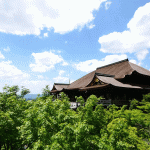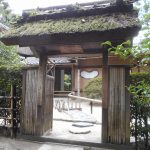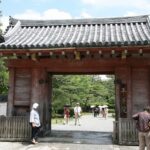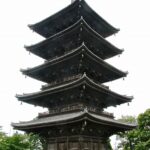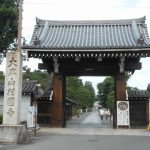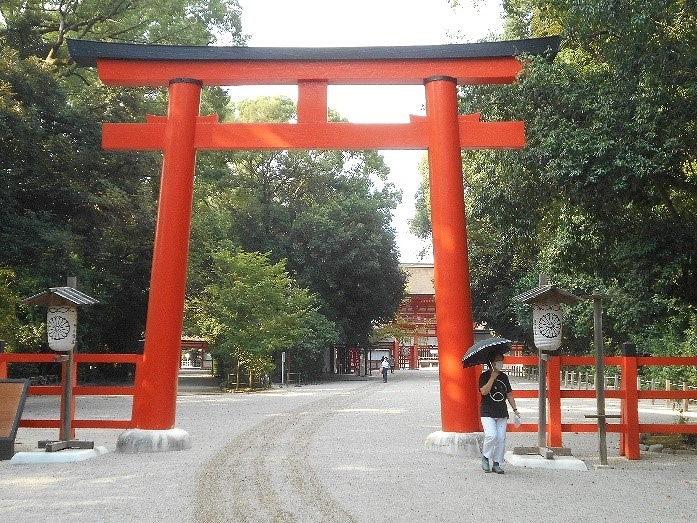
ページの目次
Shimogamo Shrine(下鴨神社)
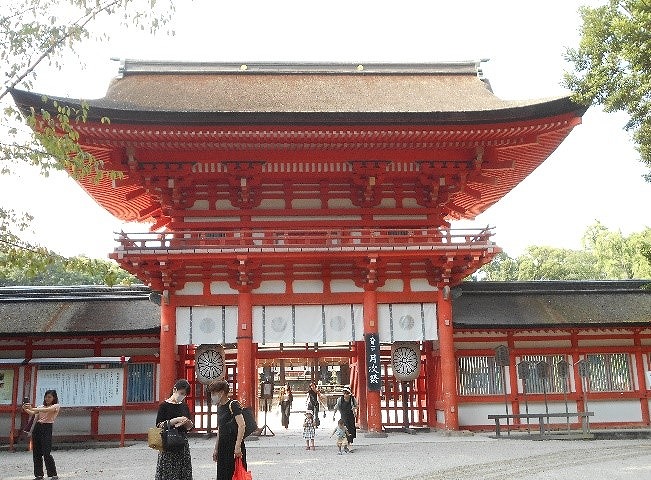
1. Location-Access
This shrine is located in Rakuhoku Area to the North of Kyoto.
We take about 40 minutes from Kyoto station to Shimogamo-Jingyamae bus stop by city bus #205, 4, and 5 minutes walk(30+5). Or it takes 30 minutes from Kyoto sta. to Kitaoji by subway and from Kitaoji to Shimogamo-Jinyamae by city bus #205, 4.
(この神社は京都北部洛北エリアに位置する。
市バス205, 4系統で京都駅から下鴨神社前、徒歩5分で計約45分。
又は、地下鉄(京都駅-北大路)+市バス205,4系統(北大路-下鴨神社前)で35分かかる。)
2. Who was built this shrine?
1) This shrine has the oldest history in Kyoto along with Kamigamo Shrine and was recognized as a World Heritage sites in 1994. Shimogamo shrine has 2 Hondens (Main shrine) of National Treasure and 53 Palaces of Important Cultural Property
(上賀茂神社と並んで京都最古の歴史を持ち、1994年世界遺産に登録された。
社殿は国宝本殿2棟と重要文化財舎殿53棟がある。)
2) The Kamo-mioya-jinja, popularly called the Shimogamo-jinja . This shrine has been regarded as a site of great historical significance because archaeological excavations at its original have been its relics of the Joumon-period.
(賀茂御祖神社は一般に下鴨神社と呼ばれている。
この神社の旧境内地では、発掘調査により縄文時代の遺跡が発見されており、当神社が歴史的に重要な場所に位置していることが知られている。)
3) When Heian-kyou was established, it counted numerous worshppers in Imperial Courted as a shrine for pacification and prediction for the nation.
All the 11th century, it had been developed into its present form. During the Ounin-no-ran(war, 1467-77) most shrine building were burned to ashes, together with surrounding forest, Tadasu-no-mori.
(平安京造営に当たっては、国家鎮護の神社として朝礼の崇敬を集めており、11世紀初頭に現在に近い姿に整えられた。応仁の乱(1466-77)により、境内は広い原野であった糺の森の樹木と共にほとんど焼失した。)
4) They are built in the Nagare-dukuri(following) style of architecture, which show clearly the ancient style of architecture form with prayer porticos in front.
(流造りの本殿は正面に向拝を付けた古い様式をよく残している。)
5) In this shrine, the building are renovated on a large scale every 21 years.
The custom to be established was in Heian Period(794-1192) and latest renovation was completed in 2015. In the past were torn down and every time.
Is it amazing that the custom has a long history.
(ここでは、21年毎に建物の大規模な修理が行われる。平安時代(701-794)に確立された制度で最近は2015年行われた。昔は建て替えていたんだ。そんなに続いていたとは驚きだとね。)
3. What is this temple famous for ?
1) Annual Event 年中行事
1/4 Kemari(Ball game), 5/3Horseback Archery, 5/12Mikage Festival, 5/13Aoi Festival, 7/end Mitarashi-sai Festival, 9/middle Autumn Moon Kangen-sai Festival,
10/9 Autumn Harvest Festival, 10/22 Festival of the Eras
(1/4蹴鞠初め、 3/3雛流し、 5/3流鏑馬神事、 5/12御影祭、 5/15葵祭、 7/下旬御手洗祭、 9月中秋名月管弦祭、10/9大国秋祭、10/22時代祭り)
2) Tadasu Woods 糺の森.
Speaking of long history, Tadasu no Mori, or Tadasu Woods, in the shrine area is a very precious piece of untouched nature preserved in the city of Kyoto.
(歴史があると言えば、境内の糺の森は京都の原野の姿を留めている貴重な森である。
124,000㎡(東京ドームの3倍)の広さで原野が残されている
3) Aoi Festival 葵祭
The Aoi Festival, held on may 15 every year, is one of kyoto’s three major festival. It is a parade of hundreds of people dressed in cloth worn in the Court around 1000 years ago. The one-kilometer parade starts from The Old Imperial Palace Gardens, goes through Shimogamo shrine, and ends at Kamigamo shrine..
(毎年5月15日に開催される葵祭は、京都三大祭の一つである。約1000年前の宮廷さながらの平安貴族衣装をまとって何百人の行列で歩く。行列は1kmに渡り、京都御苑から下鴨神社を経て上賀茂神社に到達する。)
4. What is the merit and highlight?
1) 縁結び(相生社) Matching marriage(Aoisya)
This shrine, Aoisya is said very popular with young lady worships and Kamimukono-kami dieties is shrined a pillar of Sahamura shrine.
Next to this shrine, there is a god named “Renli-no-Kengi”.It is said to be manifestation of spiritual trials that two trees is connected to one tree on the way.
(若い女性の参拝客を集めていて、神様がサムハラ神社の一柱である神皇産霊神(かみむこのかみ)である。御社の隣に「連理の賢木」という御神があり、2本の木が途中で1本に結ばれている様子は霊験の現れと言われている。
2) 美人祈願ができる「河合神社」 Kawai shrine to be prayed for beauty
Sacred diety is shrine Oihime to be female guarden diety.
Kagami-ema : Ema is an ancient Japanese pattern mirrior.
Oshirai: Maybe be beautiful lady.
Bijin- sui water: beautiful sacred water from the Karin garden.
(御祭神は女性守護神である王依姫命が祀られている。
鏡絵馬:この絵馬は日本古来の柄鏡の形をしている。御白石:美しい美肌になれるかも!
美人木:カリン姫から御神水の美人水)
3) お守り Charm
This charm, containing water from Mitarai-pond, is said to be exorcism and keep illness away. Aoi charm: Matchmaking charm with a Futaba motif is pink and green color.
Hime charm: Bag pattern made of orimped dough is different.
(御手洗池の水が入っている水守で、厄除け特に病気を寄せ付けないと言われている。
葵のお守り 双葉葵をモチーフにした縁結びの守りはピンクを緑
媛守(ひめまもり) 縮緬生地で作られ袋の模様が違う。)
4) みたらし団子 Mitarashi-Dango dunpling
To shape from bubble of water that spring from Mitarashi-ike pond in Tadasu woods. Five dumplings are the arms and legs and top is far away. It means 5 body satisfaction wishes.
(糺の森のみたらし池に湧き出す水の泡を形どって作ったもの。みたらし団子の特徴は、一串に5つの団子が刺さっている。4つの団子は四肢、離れた一番上は頭で五体満足の願いが込められている。)
